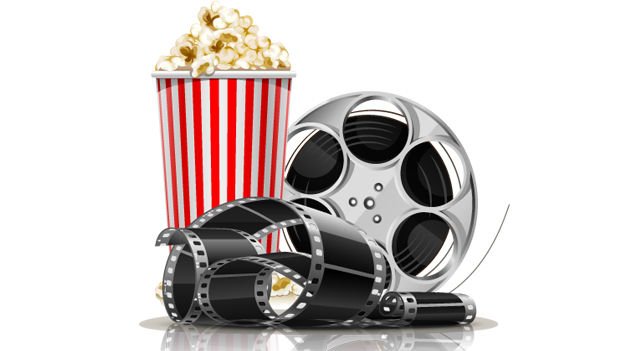The history of movies is a long and fascinating one, tracing back to the very earliest days of human civilization. From the ancient cave paintings depicting hunting scenes to the very first attempts at motion pictures in the late 1800s, the story of 9xmovies is one that spans centuries and continents.
Today, movies are more popular than ever before, thanks in large part to the advent of streaming apps like Netflix and Hulu. But how did we get from those early days to today’s modern cinematic landscape? Read on to find out!
Early Cave Paintings: One of the Earliest Forms of Movies
Some of the earliest examples of what could be considered “movies” can be found in the form of cave paintings. These paintings, found in caves all around the world, depict hunting scenes and other action-packed moments that were likely meant to be entertaining for those who saw them.
It’s impossible to know for sure if these paintings were actually intended to be entertainment, but they do offer a glimpse into the long history of humans trying to capture motion on canvas.
The First Attempts at Motion Pictures: The Zoetrope and Other Early Devices
The first real attempt at creating a motion picture was the zoetrope, a device that used a series of still images placed on a rotating cylinder. When viewed through the zoetrope, the images would appear to move, giving the illusion of motion.
While the zoetrope was a fascinating invention, it wasn’t perfect. The images were often blurry and the motion was not very smooth. Nevertheless, it was a start, and other inventors soon began to experiment with ways to improve upon the design.
Also read: Ways to Change Your Region on Netflix Easily
The First Successful Motion Picture: “Roundhay Garden Scene”
The first successful motion picture was “Roundhay Garden Scene,” which was shot by British photographer Eadweard Muybridge in 1878. The film consisted of 24 frames that were played back at a rate of 10 frames per second.
While the film was only a few seconds long, it was a major breakthrough, proving that it was possible to capture moving images on film.
The Birth of the Motion Picture Industry: The First Movie Theaters and Studios
The first movie theaters began to pop up in the early 1900s, and the motion picture industry was born. Soon, large studios like Universal and MGM were producing hundreds of films each year.
The Golden Age of Hollywood: The 1930s and 1940s
The 1930s and 1940s are often referred to as the “golden age” of Hollywood. During this time, some of the most iconic films ever made were released, including “Gone with the Wind,” “The Wizard of Oz,” and “Casablanca.”
This was also the era when many of the biggest stars in Hollywood got their start, including Humphrey Bogart, Clark Gable, and Bette Davis.
The Post-War Years: The 1950s and 1960s
After the end of World War II, Hollywood entered a new era. The 1950s saw the rise of television, which began to compete with movies for the first time. This led to a decline in movie attendance and a change in the types of films that were being made.
In the 1960s, Hollywood went through another major change with the introduction of color film. This new technology allowed for more realistic and visually stunning movies than ever before.
The New Hollywood Era: The 1970s and Beyond
In the 1970s, a new generation of filmmakers emerged who were willing to take risks and push boundaries. This resulted in some of the most groundbreaking and controversial films of all time, such as “The Godfather,” “Taxi Driver,” and “Pulp Fiction.”
The Present Rising Era with Streaming Apps
Today, we are in a new era of movies, one that is defined by streaming apps like Netflix, BeeTV, Hulu, etc. These apps have changed the way we watch movies, giving us instant access to hundreds of titles at the touch of a button.
No longer do we have to wait for movies to come out on DVD or go to the theater to see them. We can now watch whatever we want, whenever we want, and this has had a major impact on the film industry.
Movies are now being made specifically for streaming platforms, and many of the biggest hits in recent years have been released on these apps. From “Birdbox” to “Stranger Things,” it’s clear that streaming apps like Netflix & Movieplus are here to stay, and they are having a major impact on the future of movies.
Future of the Streaming Apps
It’s impossible to predict the future, but it seems safe to say that streaming apps like Netflix, Zinitevi, & Hulu are here to stay. They have changed the way we watch movies and have had a major impact on the film industry.
As more and more people subscribe to these services, they will continue to grow in popularity. We may even see traditional movie theaters start to decline as people prefer the convenience of watching movies at home.
Only time will tell what the future holds for streaming apps, but one thing is for sure: they are changing the face of movies forever.
Last Say
In the past, people had to go to movie theaters to watch films. However, in recent years, streaming apps have allowed people to watch movies whenever and wherever they want. This shift has led to a decline in movie theater attendance. While this may be seen as a negative development by some, it has also allowed for more creative and diverse filmmaking. As streaming apps like Zinitevi, Netflix & more continue to grow in popularity, we can expect even more interesting and innovative movies to be released online.
